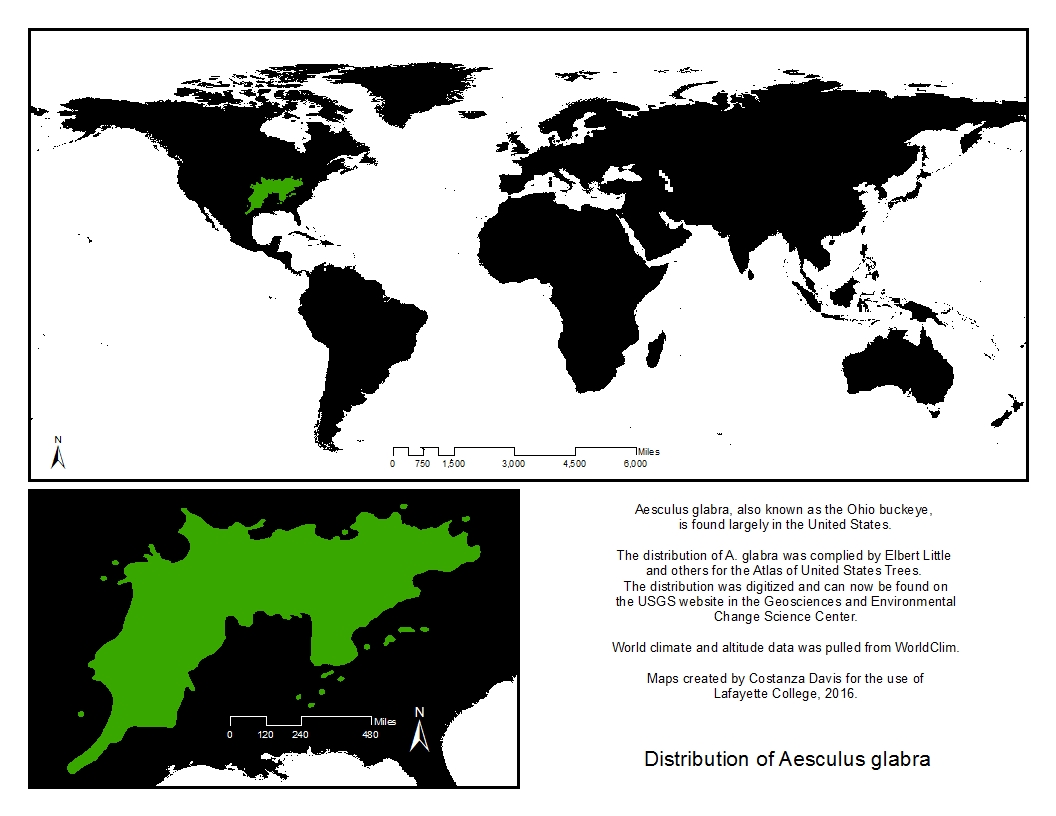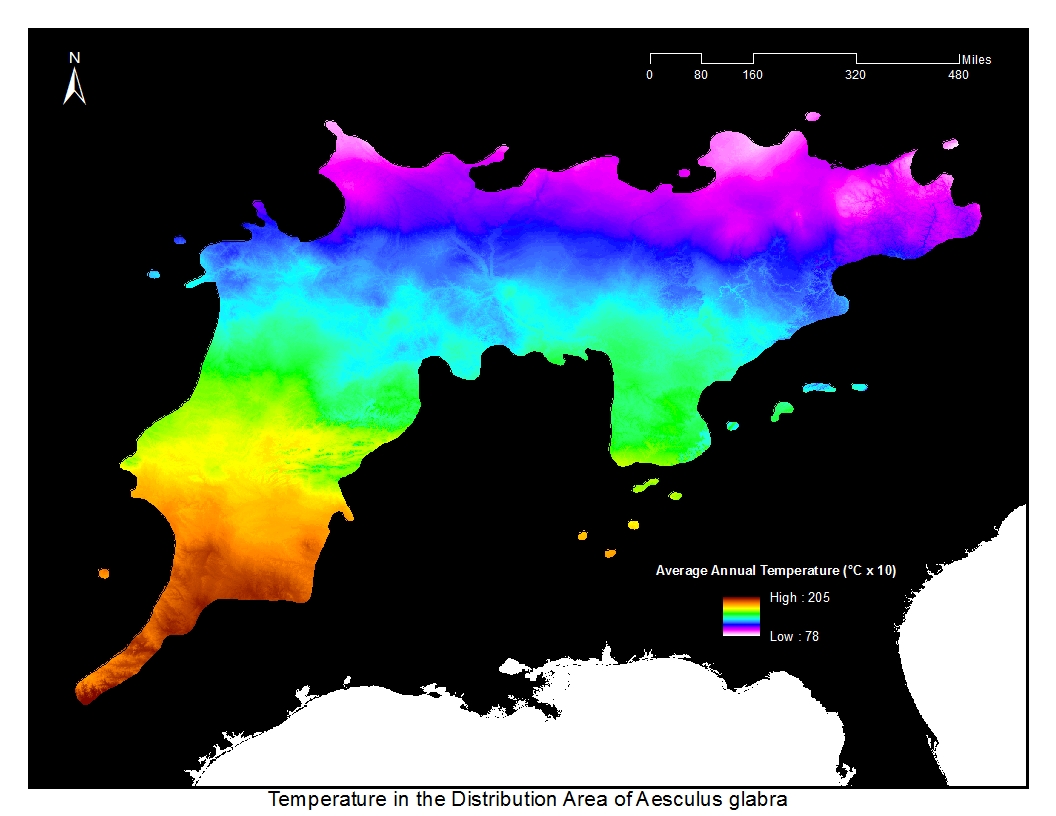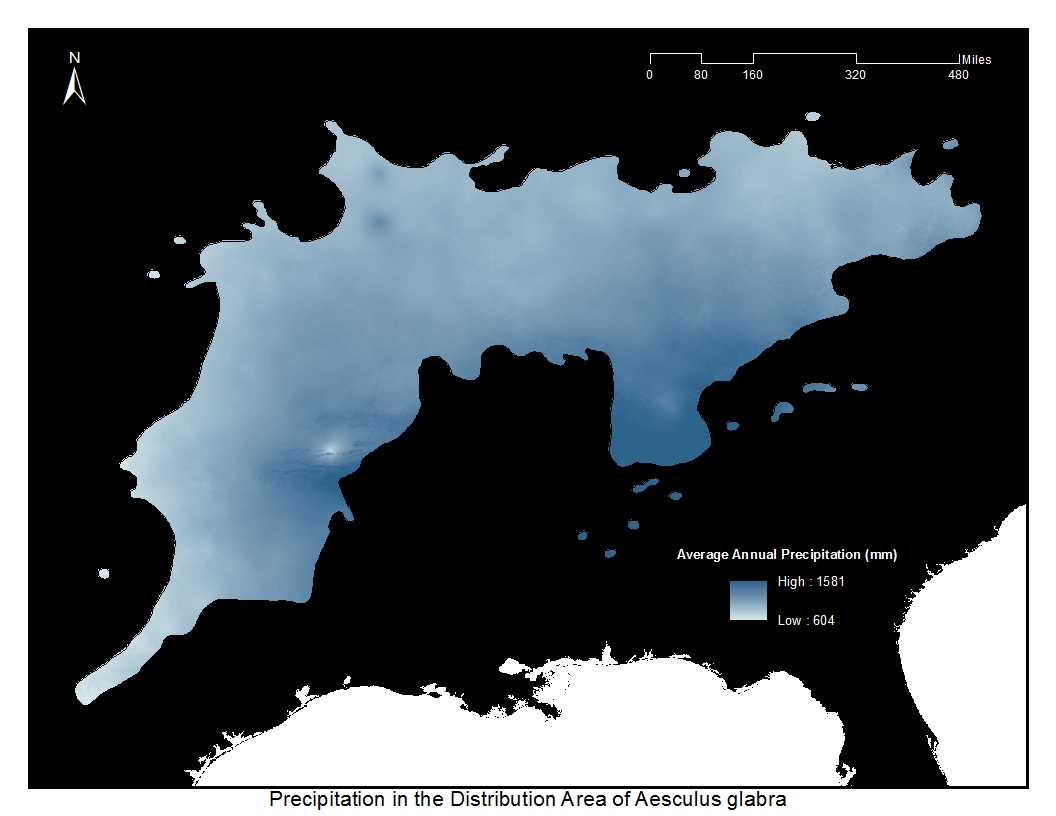The Ohio buckeye, Aesculus glabra, is also known as the American buckeye, the fetid buckeye, and the stinking buckeye. “Fetid” and “stinking” were names inspired by the smell derived from the crushing of its leaves. Abundance of the buckeye was high in the 1800s but has since fallen.
The buckeye likes moist sites and can thus be found along streambanks or river bottoms. It can still be found on drier soils where it grows more slowly, sometimes reduced to shrub status at a maximum height of 5 feet. When not so hindered by dry soils, the Ohio bucokeye commonly exceeds 40 feet in height, reaching up to 80 feet. In terms of shade, the Ohio buckeye is shade tolerant, but does best as an individual in an open area during its earlier years. When found in dense stands, the Ohio buckeye grows much straighter and undergoes natural pruning.
Ohio buckeyes bear both bisexual and male flowers, meaning it is polygamo-monoecious. The flowers are greenish-yellow, appearing from March to May in upright clusters. In each cluster, only the flowers close to the base are fertile.
The fruit of the tree is a leathery nodule that can contain up to three seeds. The nodules tend to have seams and small spines. Seeds are only produced from 8 years onwards. The deep brown seeds can look like eyes, from which comes the name “buckeye.”
The leaves of the Ohio buckeye are compound, with 5 leaflets coming from a single stalk. Each leaflet is broad and flat, and can have fine teeth. The top surface of the leaves are light green, but they are paler underneath. The bark of older buckeyes is dark, furrowed, and scaly. The wood is light and soft.
Relatively few diseases and insects affect the Ohio buckeye. While the young leaves can be killed by frost, the tree itself is resistant to severe winters and rarely damaged by frost or heavy loads of snow. Furthermore, the Ohio buckeye is resistant to sunscald.
The bark and seeds contain a narcotic glucoside that can be poisonous to livestock, and the young shoots are poisonous to cattle in particular. However, squirrels still eat some buckeye seed with no ill effect.
There are two buckeyes on the path east of Van Wickle Hall.




